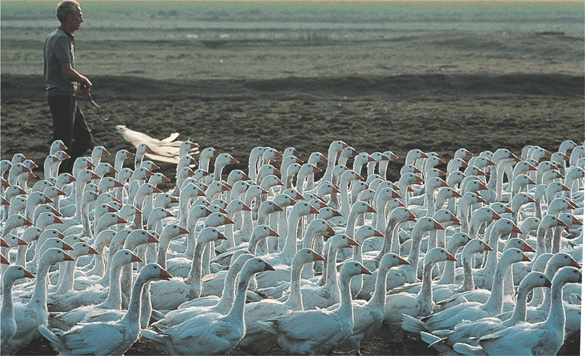Section 4 Transitions to Free Enterprise
Preview
Objectives
After studying this section you will be able to:
- Identify some important steps in moving from a centrally planned economy toward a free market economy.
- Describe the political and economic changes that have taken place in Russia in recent decades.
- Describe the actions that China's communist government has taken to introduce free market reforms into China.
Section Focus
Making the transition from a command economy to a market economy is a difficult process. The shift requires tremendous changes on the part of the government and workers.
Key Terms
- privatization
- work ethic
- glasnost
- perestroika
- light industry
- special economic zones
As you read in Section 2, many less developed countries have discovered that a centrally planned economy limits development. For this reason, many communist nations are reshaping their economies. Some, like the former Soviet Union, are dismantling their centrally planned economic systems entirely and replacing them with market-based systems. Others, like China, are modifying their centrally planned economies to incorporate some free market practices.
The transition to free markets and capitalism is a huge adjustment for an economy and a nation. As you will read below, Russia has had to adjust to rapid changes in the economy and political system. China, on the other hand, is slowly introducing market reforms within its existing communist system. Both have given up some sovereign control of their economies to join in the global marketplace.
Toward a Market Economy
One of the key elements of a centrally planned economy is that the government, not individuals, owns and controls the factors of production. The government answers the three key economic questions of what to produce, how to produce it, and how to distribute goods and services. In contrast, in a market-based economy, the factors of production are owned by individuals. Individual buyers and sellers answer the three economic questions. One of the first steps, then, in moving from a centrally planned economy to a market economy is privatization.
Privatization
Privatization is the sale or transfer of government-owned businesses to individuals. Private ownership gives individuals, rather than the government, the right to make decisions about what to produce and how much to produce.

Hungary slowly began privatizing its economy in the 1960s. Instead of raising his flock on a collective, today this goose farmer raises geese at his own expense. He then sells the meat and feathers to a cooperative, keeping all the profits.




